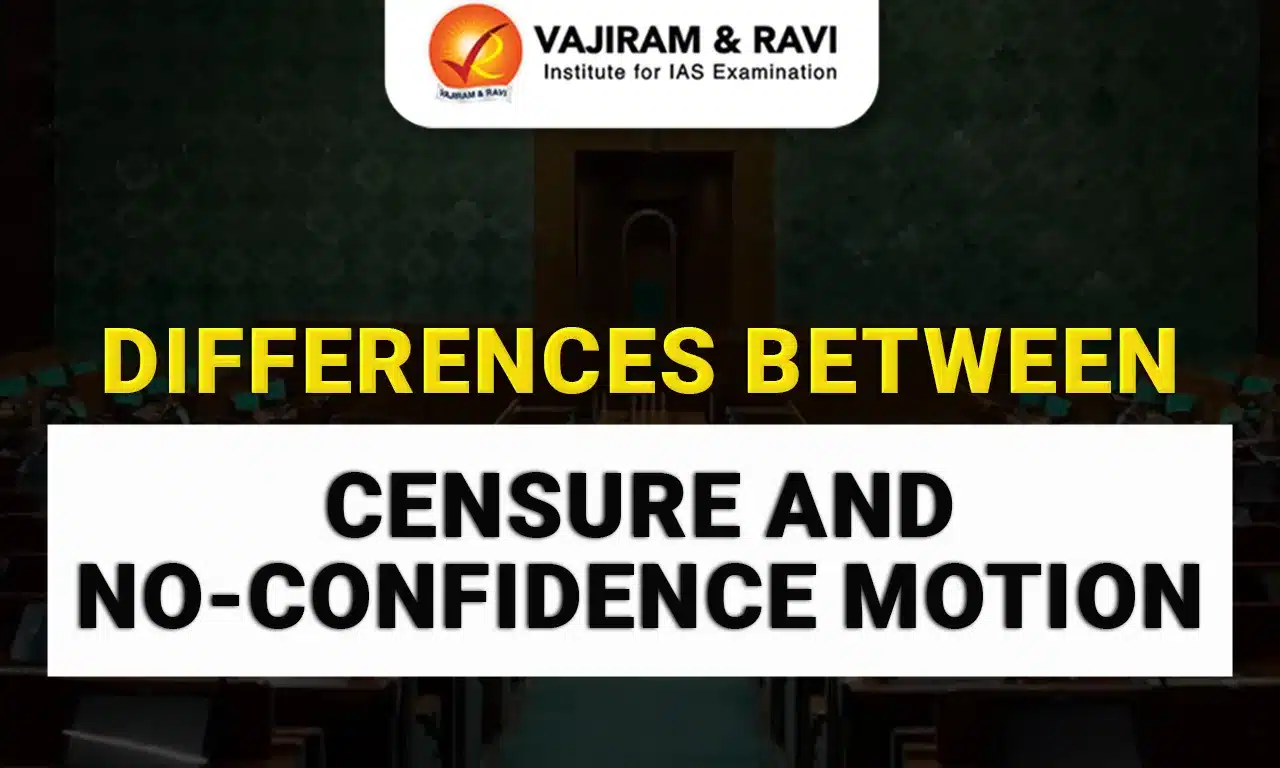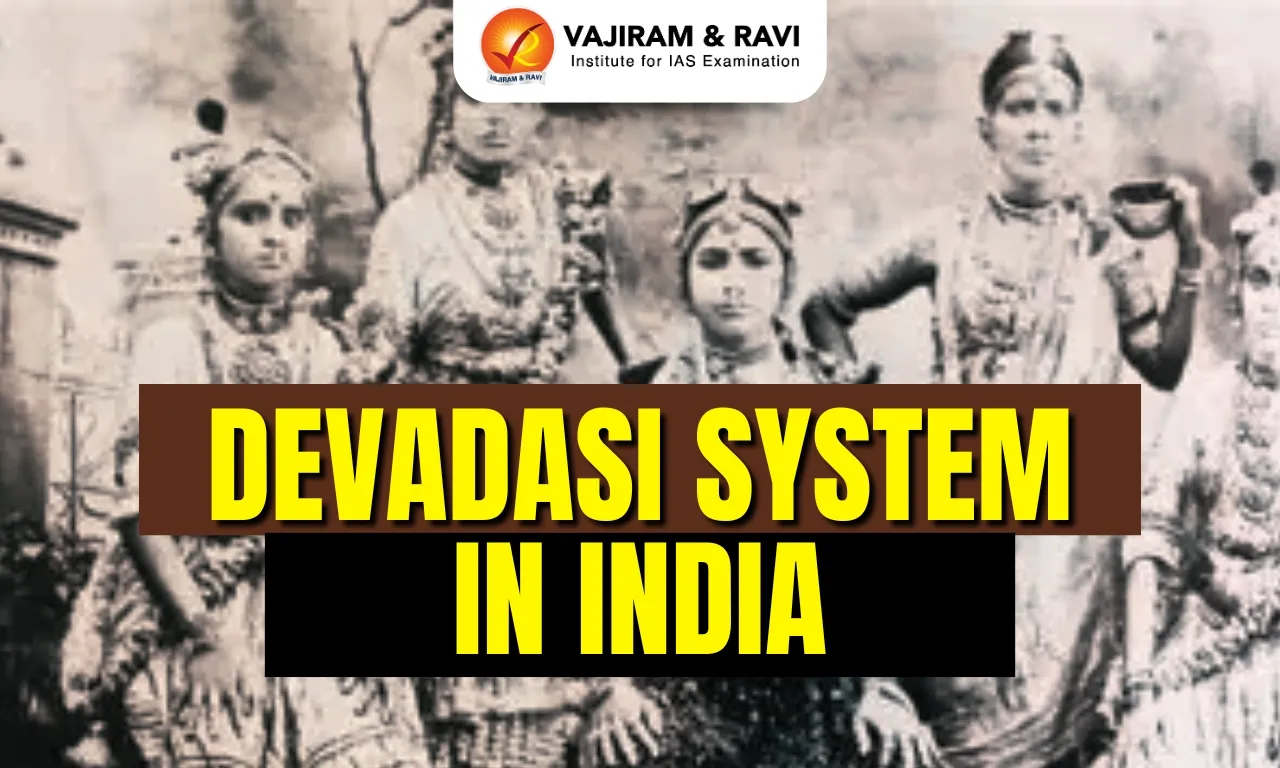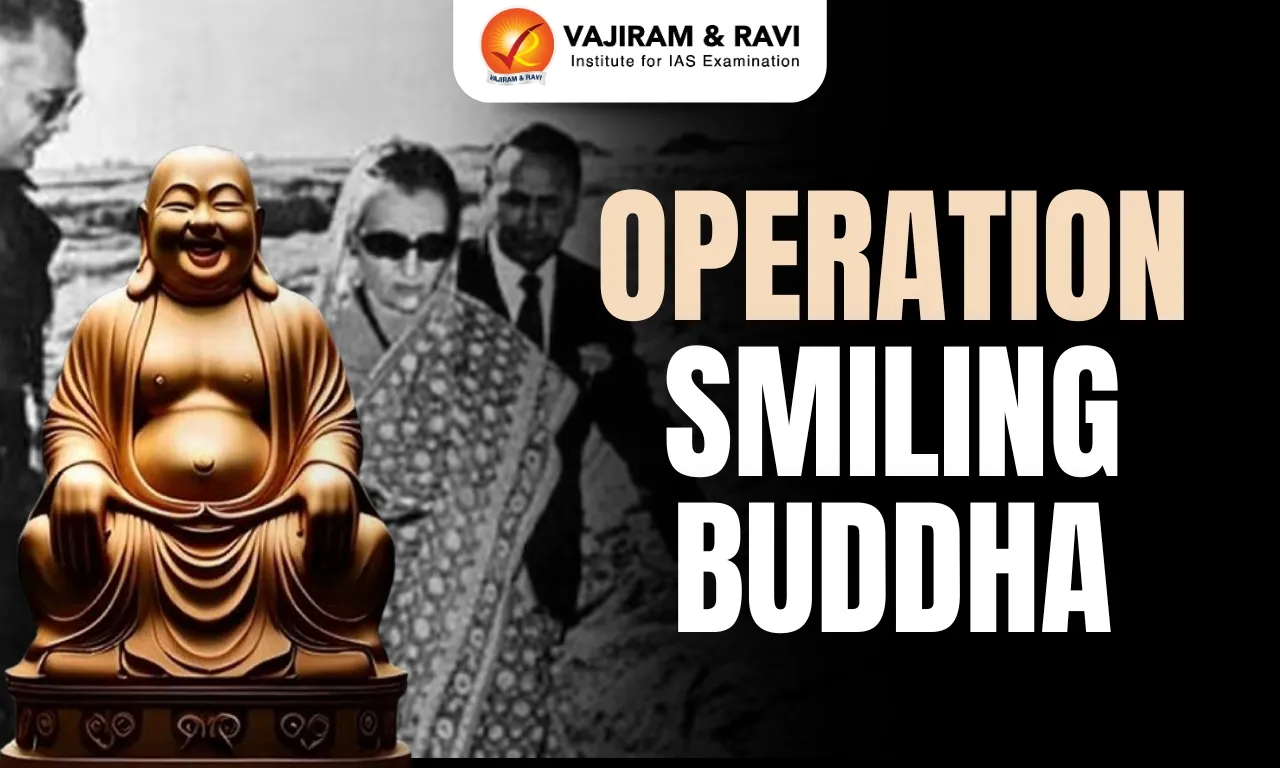In a democracy like India, the government is accountable to the legislature, especially the Lok Sabha. To enforce this accountability, members of Parliament have several tools among them, two of the most important among these are the Censure Motion and the No-Confidence Motion.
Censure Motion
A Censure Motion is a formal statement of disapproval to the policies of the government or the individual member of Parliament or the state assembly. It allows Members of Parliament (MPs) to criticize the policies or actions of the government or a particular minister. However, it does not demand the resignation of the Council of Ministers but the cabinet will not be dissolved.
Key Features
- Can be moved against an individual minister or the entire council.
- Focuses on a specific policy, action, or failure.
- Passed by a simple majority of MPs present and voting.
- Does not lead to resignation, even if passed.
- Used more as a tool for moral pressure or political messaging.
Example: If the opposition feels that the Home Minister mishandled a law-and-order situation, they can move a censure motion criticizing that decision.
No-Confidence Motion
A No-Confidence Motion is much stronger in its implications. It is a motion moved in the Lok Sabha that explicitly states that the House no longer has confidence in the Council of Ministers. The procedures to introduce the No Confidence Motion in Lok Sabha is discussed in Rule 198 of the Lok Sabha Rules of Procedure and Conduct.
Key Features
- Can only be moved against the entire Council of Ministers, not an individual minister.
- If passed, the government must resign immediately.
- Requires support of at least 50 members to be accepted for discussion.
- Decided by a simple majority of the House.
- A direct challenge to the legitimacy of the government.
Example: In 1999, the Vajpayee government lost a No-Confidence Motion in Lok Sabha by one vote, leading to its fall.
Differences Between Censure and No-Confidence Motion
The table includes the Differences between Censure and No-Confidence Motion in a side by side comparison manner for the convenience of the reader.
| Differences Between Censure and No-Confidence Motion | ||
| Feature | Censure Motion | No-Confidence Motion |
|
Definition |
Usually introduces to disapproval for any individual or policy introduced |
Declaration that the House has no confidence towards the government |
|
Target |
Individual minister or the whole council |
Entire Council of Ministers |
|
Reason Required |
Must state the reason |
No reason needs to be stated |
|
Effect if Passed |
No resignation required |
Government must resign |
|
Purpose |
Criticize specific policies/actions |
Question government’s majority in Lok Sabha |
|
Constitutional Mention |
Not mentioned in the Constitution |
Also not in Constitution, but well established in practice |
|
Initiation Procedure |
No minimum support required to introduce |
Needs support of 50 members to be admitted |
|
Voting |
Simple majority of members present and voting |
Simple majority of total members present and voting |
|
Frequency |
Can be moved frequently |
Usually rare and strategic |
Why the Difference Matters
The Differences Between Censure and No-Confidence Motion is more than just procedure. It reflects two levels of parliamentary control:
- A Censure Motion is like a warning, a sharp message, often meant to highlight issues.
- A No-Confidence Motion is a verdict, a decisive move to remove the government when the parliament is not having the confidence towards the government.
Last updated on December, 2025
→ Check out the latest UPSC Syllabus 2026 here.
→ Join Vajiram & Ravi’s Interview Guidance Programme for expert help to crack your final UPSC stage.
→ UPSC Mains Result 2025 is now out.
→ UPSC Notification 2026 is scheduled to be released on January 14, 2026.
→ UPSC Calendar 2026 is released on 15th May, 2025.
→ UPSC Prelims 2026 will be conducted on 24th May, 2026 & UPSC Mains 2026 will be conducted on 21st August 2026.
→ The UPSC Selection Process is of 3 stages-Prelims, Mains and Interview.
→ UPSC Result 2024 is released with latest UPSC Marksheet 2024. Check Now!
→ UPSC Toppers List 2024 is released now. Shakti Dubey is UPSC AIR 1 2024 Topper.
→ Also check Best IAS Coaching in Delhi
Differences Between Censure and No-Confidence Motion FAQs
Q1. What is the main difference between a Censure and No-Confidence Motion?+
Q2. Can a Censure Motion remove a minister?+
Q3. Is a reason required to move a No-Confidence Motion?+
Q4. Who can move these motions?+
Q5. How many members are needed to admit a No-Confidence Motion?+

















